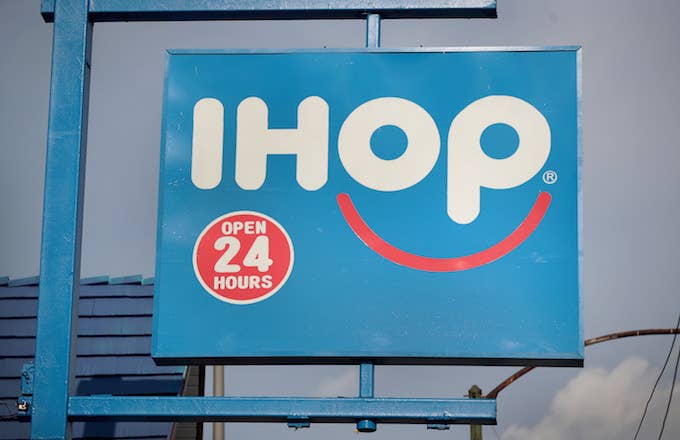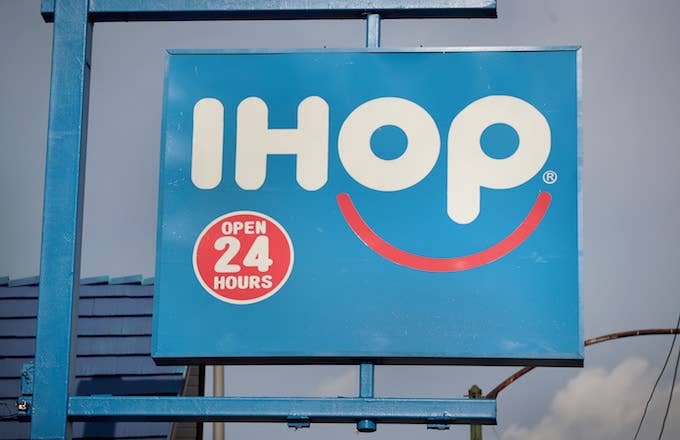
Pepsi is out here throwing royalty money at Cardi B and Steve Carrell and IHOP thought it could get away with flipping the p in pancakes upside down to make a b, as in burgers, as in something you don't go to IHOP to eat. However, as social media users snickered at the underwhelming marketing ploy last summer, it turns out the chain restaurant actually got the last laugh.
According to Chief Marketing Officer Brad Haley, IHOP sold four times the amount of burgers following their name change—meaning they were selling over 500,000 burgers a week. Prior to the campaign, traffic at the restaurant had been sharply declining over the past 10 quarters.
It's not entirely surprising given how much traction the news garnered online. The marketing stunt managed to rake in 42.6 billion impressions and 1.2 million tweets in the first 10 days of the campaign. “We knew that there was a big credibility gap for this pancake and burger place to come up with a good burger,” said Haley.
The stunt was manufactured to promote the chain's newest line of grass-fed burgers, and increase foot traffic during lunchtime. Although the American staple had always been on IHOP's menus, the brand wanted to shift the focus towards savory foods.
“So we knew we had a great burger. We knew we had an offer in place that wouldn’t remove the barrier to trial for people,” Haley said. “At least it would significantly reduce [the barrier]—but we still had to figure out how to make the world consider a burger from a pancake house.”

